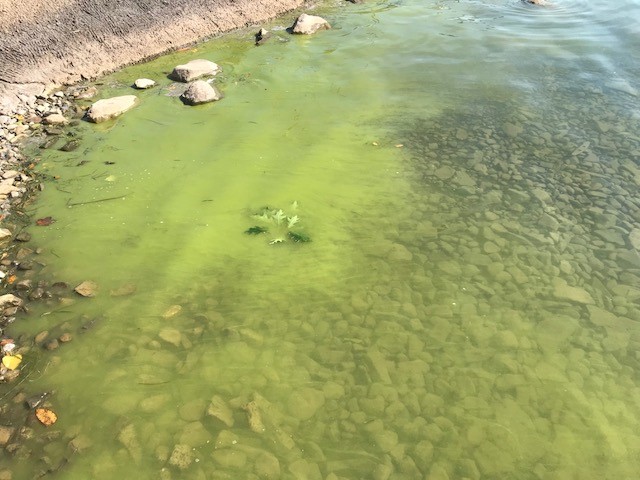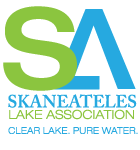ALERT: Harmful Algal Blooms (HABs) have been observed in the south eastern end of the lake. LEARN MORE
ALERT: Harmful Algal Blooms (HABs) have been observed in the south eastern end of the lake. LEARN MORE
Harmful Algal Blooms
Harmful algal blooms (HABs) in freshwater lakes, ponds, rivers, and streams generally consist of visible patches of cyanobacteria, also called blue-green algae. Cyanobacteria are naturally present in low numbers in most aquatic systems.
When conditions include excessive nutrients (e.g., phosphorus), warm temperatures, and calm winds, cyanobacteria may multiply rapidly and form blooms that are visible on the surface of the lake. Certain types of cyanobacteria produce toxins and other harmful compounds that can pose health risks to people and animals through ingestion, skin contact, or inhalation.
In 2017, a lake-wide HAB turned the entire lake green prompting the SLA to develop the Harmful Algal Bloom Response Plan. The plan focuses on ways to prevent nutrient-loading using the following SLA core programs:
Skaneateles Lake participates in the NYSDEC HAB Surveillance Program. Over 30 residents have been trained in identifying and reporting HABs, and are monitoring the lake weekly. SLA documents HAB occurrences, reports them to the NYSDEC, and informs the community on our website, in email and on social media channels.
In addition to SLA programs and shoreline monitoring, watershed residents can help slow down or eliminate future HAB occurrences by practicing Lake Friendly Living. Learn how to reduce nutrient loading into Skaneateles Lake using the SLA Community Guide to Lake Friendly Living.

